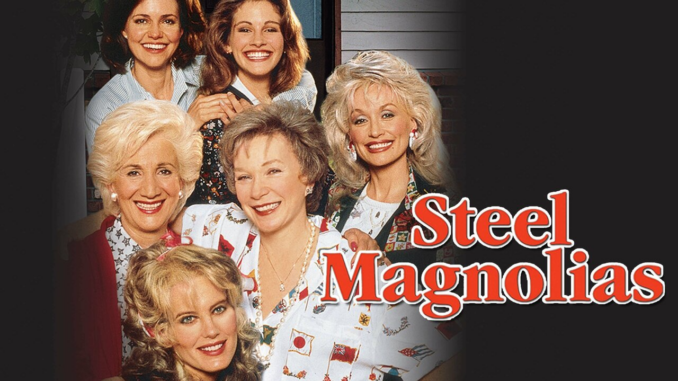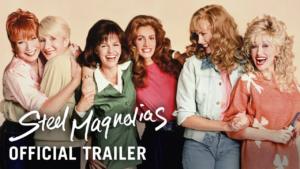
The Game-Changing Role of Julia Roberts in Steel Magnolias and Its Influence on Female Empowerment in Film
When Julia Roberts stepped into the role of Shelby Eatenton in Steel Magnolias (1989), she did more than just deliver an emotionally powerful performance. She helped redefine what it meant to be a woman on screen. Shelby, a young woman battling a serious illness, is not the stereotypical “damsel in distress” nor a mere plot device. She is complex, independent, and full of life, even in the face of her medical challenges.
In many ways, Steel Magnolias was ahead of its time. While films at the time often depicted women as secondary characters, love interests, or passive players, Steel Magnolias flipped the script. It highlighted the strength, resilience, and agency of women through the lens of a group of Southern women navigating life’s ups and downs. Julia Roberts’ portrayal of Shelby not only catapulted her career but also marked a pivotal moment in the representation of women in Hollywood.
In this article, we’ll explore how Julia Roberts’ role in Steel Magnolias changed the game for female empowerment in film, and why Shelby Eatenton remains one of the most influential female characters in Hollywood history.
1. Shelby Eatenton: A Complex and Empowered Female Lead
Before Julia Roberts’ groundbreaking performance as Shelby, female characters in films were often defined by their relationships with men or limited to narrow archetypes. Shelby Eatenton was different. She was neither a passive character nor a mere love interest. Shelby was strong, independent, and emotionally complex—a young woman determined to live life to the fullest despite her illness.
Her decision to marry despite knowing the risks associated with her diabetes and the impact it could have on her health challenges the idea that women should conform to societal expectations. She wasn’t just a “sick girl” or a tragic character, but rather someone who made decisions on her own terms. Shelby’s empowerment came from her ability to live with agency, to choose love and family despite her health struggles, and to embrace life fully, even in the face of immense hardship.
Roberts’ performance helped redefine the kinds of roles women could play in Hollywood. Women didn’t need to be defined by their victimhood or romantic relationships—they could be bold, strong, and independent in their own right. Shelby’s strength wasn’t about physical endurance—it was about emotional resilience, and it was a message that resonated with audiences worldwide.
2. Breaking the “Damsel in Distress” Stereotype
At the time Steel Magnolias was released,
the “damsel in distress” trope was still prevalent in Hollywood, especially in films centered around women. Female characters were often portrayed as helpless, needing to be saved or defined by their relationships with men. Shelby’s character broke this mold.
Rather than being a passive character who existed only to be saved or protected, Shelby was an active participant in her own life story. While her illness was a central plot point, it didn’t define her. Instead, she made choices that reflected her independence, including her decision to marry, have children, and live life on her own terms.
Julia Roberts’ portrayal of Shelby was refreshing because it showed women in a different light. Shelby was not a passive participant in her life—she was its driving force. She was strong, compassionate, and in control of her own destiny, even in the face of adversity. This was a significant departure from the typical representation of women in Hollywood at the time, and it helped open the door for more empowered female characters to take center stage.
3. Female Friendship as a Pillar of Strength
One of the most powerful themes in Steel Magnolias is the strength of female friendship, and Roberts’ portrayal of Shelby contributed to this central narrative. While much of Hollywood at the time focused on romantic relationships or familial bonds, Steel Magnolias explored the complexity and depth of female friendships. Shelby’s relationships with her friends and family were just as important as her personal journey.
Throughout the film, we see the women support each other through life’s most difficult challenges. The film showcases how women can rely on each other for emotional support, strength, and resilience. Shelby’s bond with her friends—especially M’Lynn, her mother, and Truvy, the beauty salon owner—is a powerful example of how female solidarity can provide strength in times of crisis.
In a sense, Steel Magnolias was groundbreaking because it showed women supporting each other through tough situations, without the need for male intervention or validation. This theme of female friendship was revolutionary, as it highlighted the emotional depth and richness of relationships between women.

4. A Shift Toward Realistic and Relatable Female Characters
Julia Roberts’ portrayal of Shelby Eatenton also marked a shift toward more realistic and relatable female characters in film. At the time, women in movies were often relegated to stereotypical roles, like the “perfect mother,” the “naive girl,” or the “troubled soul.” Shelby was none of these. She was complex, real, and relatable—qualities that made her a standout character in a sea of more one-dimensional portrayals of women.
Shelby’s struggles with her health were not portrayed as her only defining characteristic. She was not just “the sick girl”—she was a daughter, a wife, a mother, and a friend, each of these identities contributing to her complexity as a character. Her journey wasn’t solely about her illness but also about her choices, her love for those around her, and her determination to live life on her own terms.
By presenting a multi-dimensional character like Shelby, Steel Magnolias set a new standard for female representation in film. Women on screen could have flaws, make mistakes, and still be the heroes of their own stories.
5. Shifting the Narrative for Women in Hollywood
Before Steel Magnolias, the landscape for women in Hollywood was often defined by traditional, gendered roles. Women were frequently written as love interests, mothers, or secondary characters whose arcs were primarily driven by the actions of men. Julia Roberts’ performance in Steel Magnolias helped change that narrative.
Shelby’s story, and by extension Julia Roberts’ performance, demonstrated that women could be the driving force in their own stories. They could be strong, make decisions independently, and be at the center of compelling, emotionally rich narratives.
Steel Magnolias also helped to show that women didn’t need to be defined by their relationship status or their connection to men. Shelby’s character was independent in her choices, from her marriage to her battle with her illness, and she was still the hero of her own story. Julia Roberts’ role in the film proved that women could lead films and inspire audiences, regardless of the storyline.
6. Shelby Eatenton’s Legacy: A Lasting Impact on Female Characters
Shelby’s character continues to be one of Julia Roberts’ most iconic roles, and the legacy of Steel Magnolias remains strong today. Shelby represents a kind of female empowerment that transcends time—one that isn’t based on physical appearance or external validation but on inner strength, emotional resilience, and the ability to choose one’s own path.
Shelby Eatenton Latcherie became more than just a character in a film; she became a symbol of courage, independence, and the power of female friendship. Julia Roberts’ portrayal of Shelby opened the door for more diverse, empowered female characters in film, setting the stage for the kinds of roles we see today. Women like Rey in Star Wars, Furiosa in Mad Max: Fury Road, and countless others owe a debt to the work that Julia Roberts did in Steel Magnolias.
